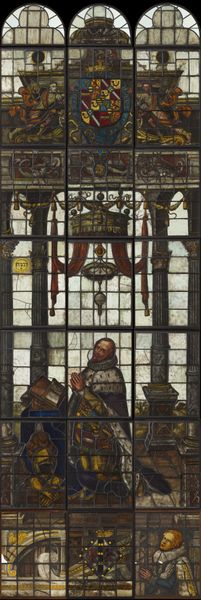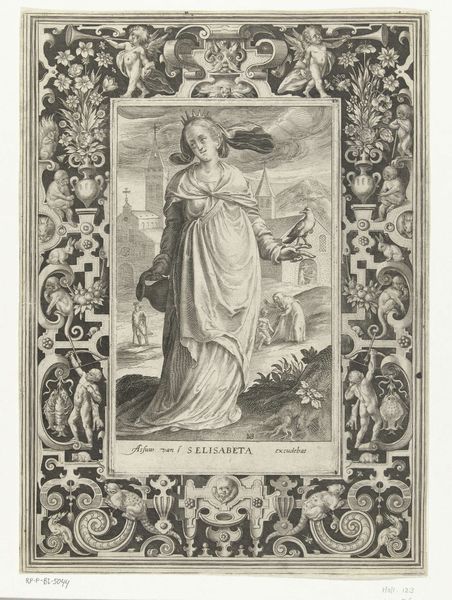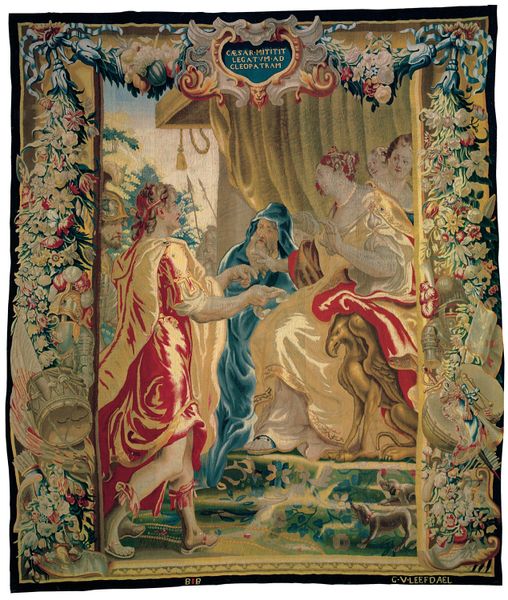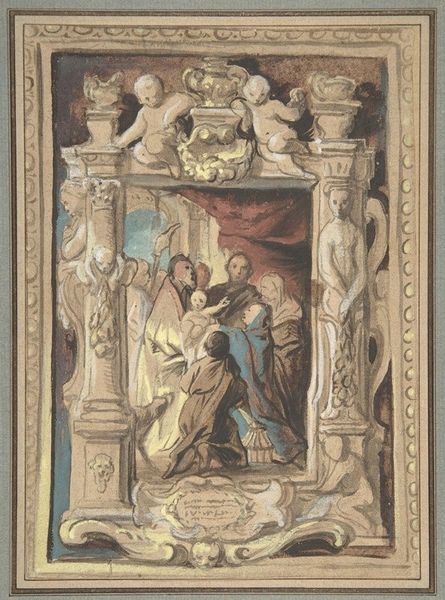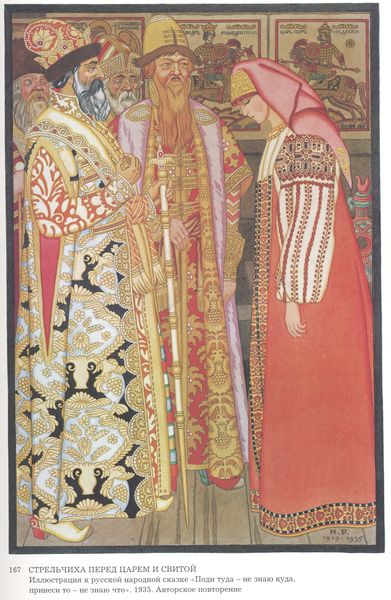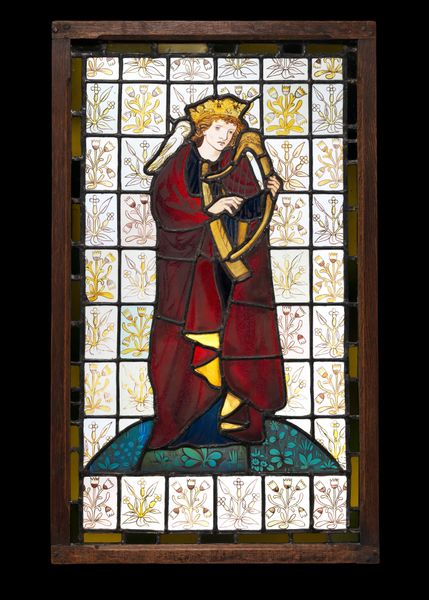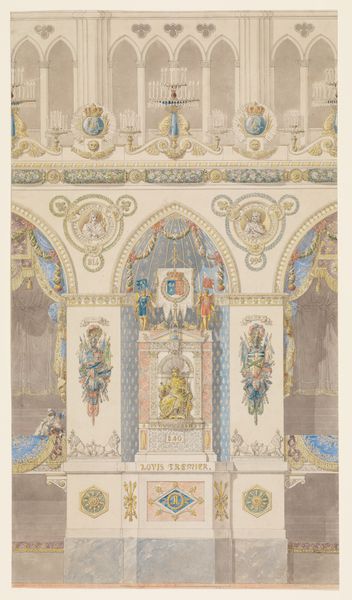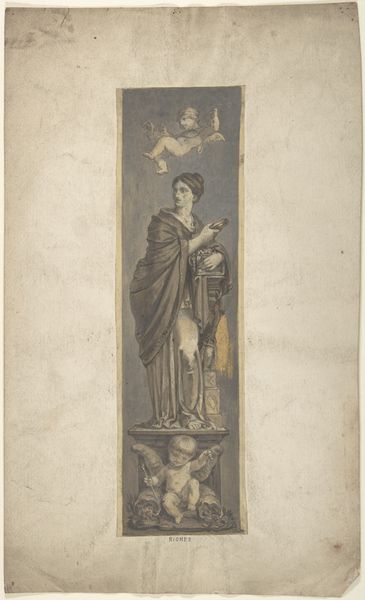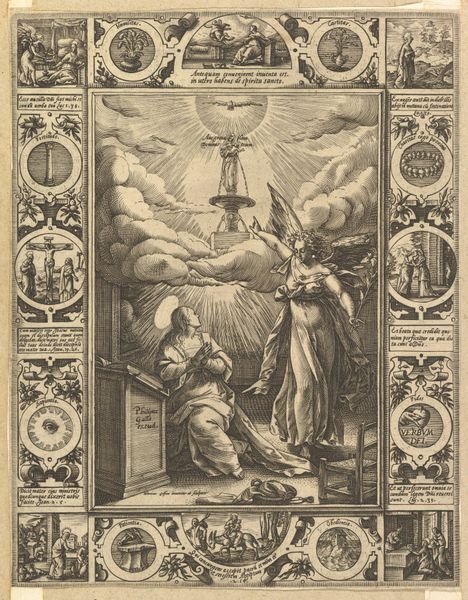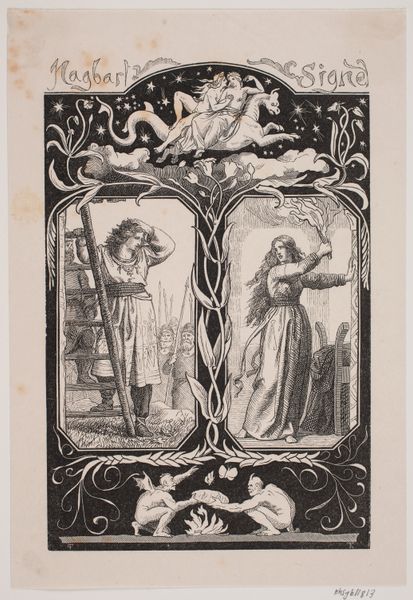
Welcome: Stained Glass Window from the Mrs. George T. Bliss House, New York 1908 - 1909
0:00
0:00
mixed-media, stain, glass
#
mixed-media
#
art-nouveau
#
stain
#
sculpture
#
landscape
#
stain glass
#
mosaic
#
figuration
#
geometric pattern
#
glass
#
united-states
#
symbolism
#
decorative-art
Dimensions: 156 x 96 in. (396.2 x 243.8 cm)
Copyright: Public Domain
Editor: This is "Welcome: Stained Glass Window from the Mrs. George T. Bliss House, New York" made around 1908 by John La Farge. It’s currently at the Met. The figure feels both classical and dreamlike, emerging from a jewel-toned landscape. What draws your eye to this work? Curator: The window is a powerful statement on what it means to ‘see’ and to be ‘seen.’ La Farge was fascinated with iridescence, the way light interacts with surfaces. Notice the geometric patterns alongside floral motifs, juxtaposed to create a sense of natural order and contained exuberance. Do you see anything familiar? Editor: I notice the laurel wreaths and what looks like ribbons, details that I remember studying from Roman art. Does the setting of the woman affect that interpretation? Curator: Precisely. These symbolic inclusions ground the work in a tradition of honor and welcome. The female figure could represent a domestic goddess, perhaps even the spirit of the home, a benevolent presence welcoming visitors. Considering the Art Nouveau context, how does this stained-glass narrative speak to that era's values? Editor: I can see the symbolism connecting it with that time; there’s beauty but also, like, a moral message intertwined. I guess it’s more than just pretty. Curator: Yes, Art Nouveau often intertwined aesthetics with underlying moral and philosophical concepts. La Farge provides a conduit from one era to the next through symbols, speaking to viewers across time. What’s your take? Editor: It makes me wonder about who Mrs. Bliss was and what sort of ‘welcome’ this stained glass window was supposed to give. It’s all connected somehow – history, style and what this art *means*. Curator: Exactly! Visual art contains cultural memory. Hopefully, that has broadened how you see this piece and possibly others too.
Comments
No comments
Be the first to comment and join the conversation on the ultimate creative platform.
